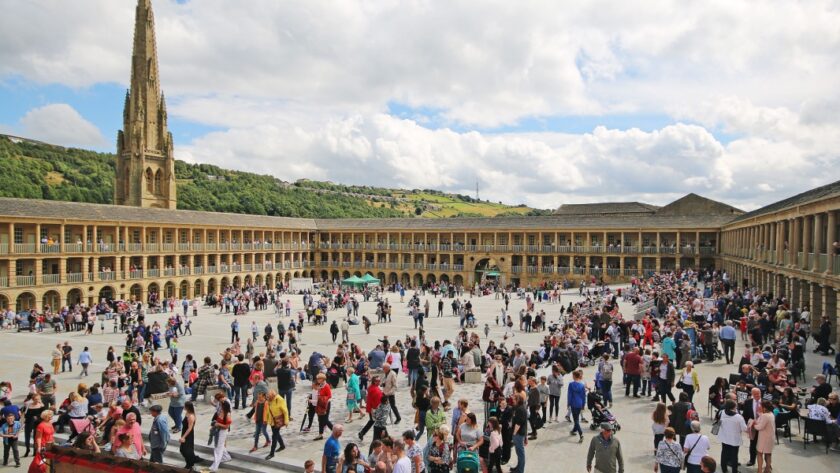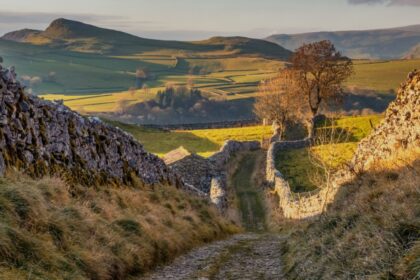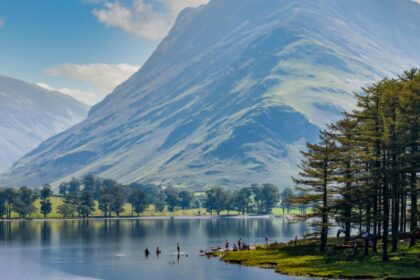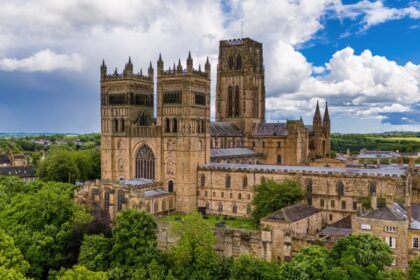West Yorkshire is England with its boots on. It is mills and moors, cities and villages, literature and industry, all crammed into one surprisingly compact and endlessly interesting package. You get stone-built towns clinging to hillsides, cities that once powered empires, wild uplands where the weather changes its mind every five minutes, and people who tell you exactly what they think — usually with a grin.
It is a county that has seen wealth, hardship, art and invention, and somehow managed to keep its sense of humour through all of it.
Leeds, mills and a city that reinvented itself
Leeds has long been West Yorkshire’s big city, once built on wool, cloth and banking, now reborn as a modern centre for shopping, universities, nightlife and business. Victorian arcades still run beneath grand iron-and-glass roofs, while former warehouses have turned into trendy flats, art galleries and craft beer pubs.
The Leeds-Liverpool Canal threads quietly through the city centre, reminding you that the whole place once pulsed with barges, bales and commerce. Today, it’s more likely to be joggers and paddleboarders, but the water still ties old and new Leeds together.
Bradford, curry and a touch of cinematic flair
Bradford wears its industrial heritage with pride, its old wool mills once clothed half the world. Today, the city is known for its rich cultural mix, outstanding curry houses and its role as the UK’s first UNESCO City of Film. The National Science and Media Museum celebrates everything from early photography to Hollywood blockbusters.
Nearby Saltaire, a perfectly preserved Victorian model village built by mill owner Titus Salt, remains one of England’s finest examples of industrial philanthropy, its grand mill now filled with art, shops and the work of David Hockney, one of Yorkshire’s most famous artistic exports.
Haworth, Brontës and the wild moors
Just west of Bradford lies Haworth, forever linked to the Brontë sisters, who wrote some of England’s most famous novels while staring out at the wind-whipped moors. The Brontë Parsonage Museum preserves their remarkably modest family home, while the surrounding landscape remains much as they described it: rugged, dramatic and wonderfully atmospheric.
Walking across the moors here, it’s hard not to imagine Wuthering Heights playing out in the distance, though fortunately with fewer tragic outcomes for modern visitors.
Wakefield, sculpture and sturdy Yorkshire roots
Wakefield may be one of West Yorkshire’s quieter cities, but it has a few surprises up its sleeve. The Hepworth Wakefield art gallery honours local sculptor Barbara Hepworth with striking modern architecture, while the nearby Yorkshire Sculpture Park spreads modern and contemporary works across 500 acres of rolling countryside.
Wakefield’s cathedral and market square retain their historic charm, while the surrounding towns and villages offer no-nonsense Yorkshire warmth, fine real ales, and pubs where the Sunday roast remains a near-sacred institution.
Huddersfield & Halifax, hills and a fine bit of Victorian ambition
Huddersfield sits in the shadow of the Pennines, its skyline dominated by handsome Victorian mills, solid stone buildings, and one of England’s grandest railway stations, Sir John Betjamin’s favourite station and once described as “a stately home with trains.”
The town played its part in Britain’s textile boom and remains proud of its strong sense of local identity, excellent market and lively cultural scene.
Halifax is one of those places that seems to have accidentally misplaced its fame. It has all the ingredients, soaring hills, a town centre made of handsome soot-kissed stone, and a history that goes back to the days when wool was king and everyone smelled faintly of lanolin. The Piece Hall alone is worth the detour: an 18th-century cloth hall that looks like it was designed by someone with a fondness for Roman amphitheatres and a deep love of symmetry. Today, it’s been lovingly revived with coffee, bookshops, and the sort of independent boutiques that sell things you didn’t know you needed until five minutes ago. Add in a spiky Victorian market, a unique industrial museum, and the fact that Cat’s Eyes were invented here, and you start to wonder why Halifax isn’t on more postcards.
Moors, dales and proper Yorkshire scenery
Beyond the cities, West Yorkshire tips into the Pennines and the fringes of the Yorkshire Dales. Places like Ilkley Moor, with its famous song (“baht ‘at”), offer proper windswept walking, while the Calder Valley delivers wooded hills, old mills, and towns like Hebden Bridge, now filled with independent shops, artists and a slight air of cheerful bohemianism.
The landscape feels built for walking boots, rainproof jackets and large flasks of tea. Which is precisely how many of the locals approach it.
Where England keeps its pride well polished
West Yorkshire doesn’t go in for grand boasts — it doesn’t need to. It offers cities full of life, countryside full of drama, and communities full of character. After a few days here, you may find yourself speaking your mind a bit more directly, ordering stronger tea, and quietly wondering why you don’t live here already.





